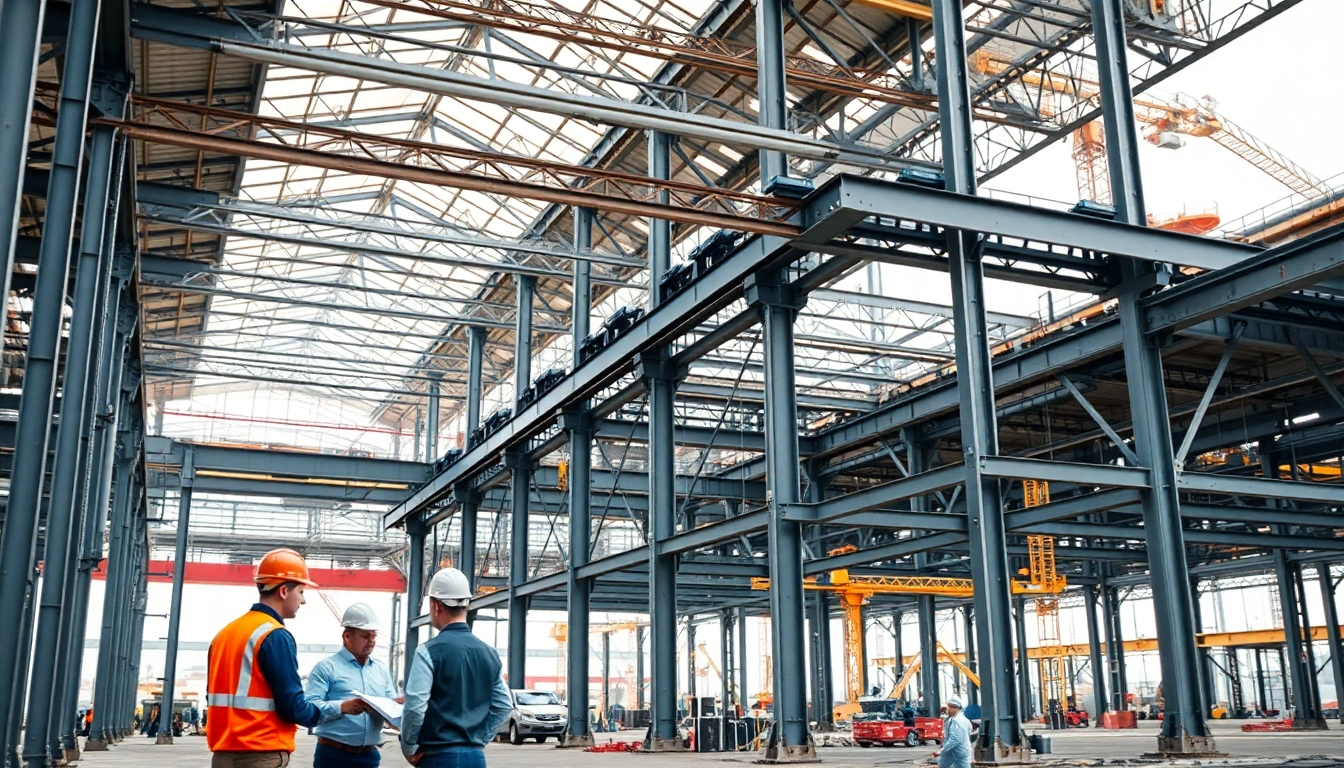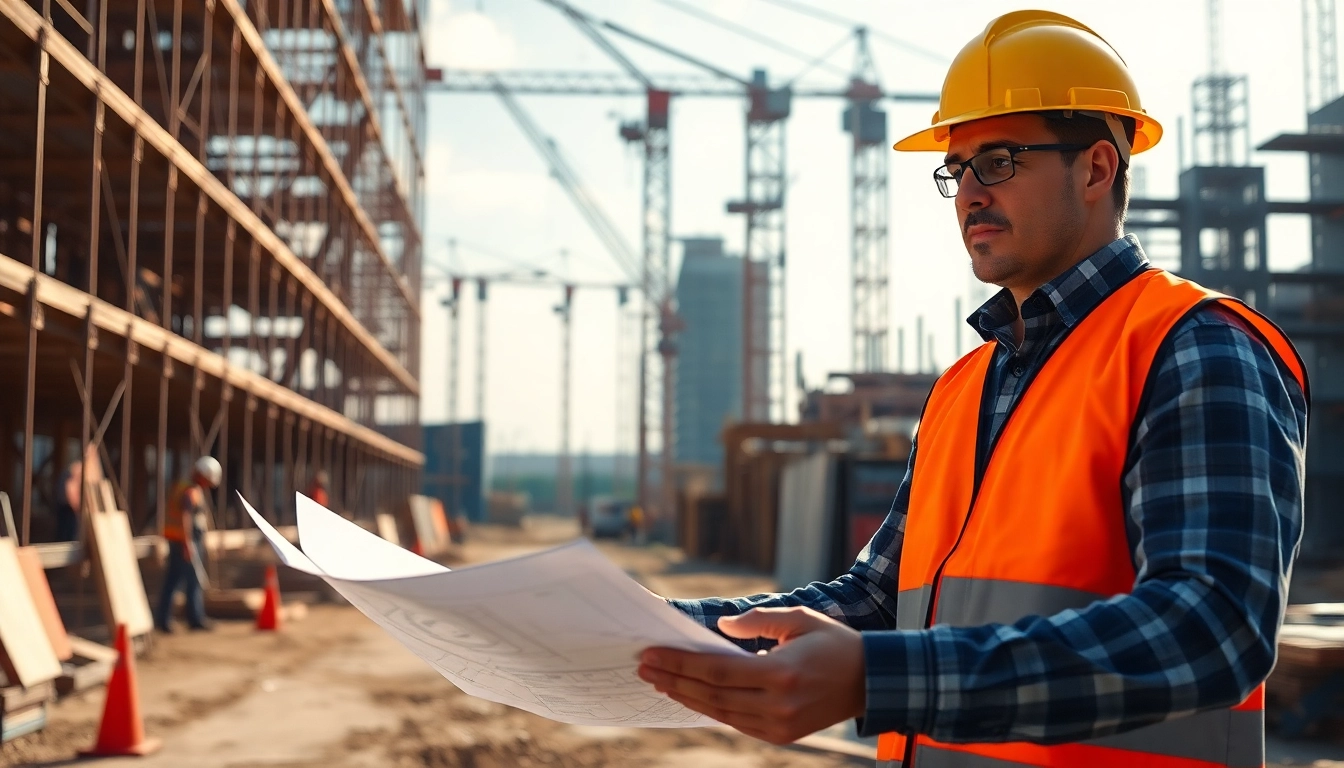Understanding the Role of a Manhattan Construction Manager
In the dynamic realm of construction, the position of a Manhattan Construction Manager stands as a pivotal force that influences the trajectory of project success. A construction manager is not only responsible for the oversight of a project from inception to completion but also acts as a vital liaison among various stakeholders, ensuring that the project unfolds smoothly, on time, and within budget. This article delves into the multifaceted responsibilities of a construction manager, the essential skills they must possess, and the technology that can enhance their effectiveness.
What is a Construction Manager?
A construction manager (CM) is a professional tasked with leading, managing, and coordinating construction projects. From residential builds to commercial structures, CMs are engaged at various phases of the project lifecycle. Unlike general contractors, who focus primarily on construction execution, construction managers often assume a broader role that encompasses planning, budgeting, and even regulatory compliance.
They serve as strategic partners for owners and consulting teams, facilitating effective communication and collaboration among all parties involved. This holistic perspective is critical in ensuring that projects adhere to defined goals and quality standards.
Key Responsibilities
A Manhattan construction manager’s responsibilities extend far beyond supervising construction workers. Key tasks include:
- Project Planning: Developing comprehensive project plans that consider timelines, budgets, resources, and regulatory requirements.
- Budget Management: Establishing and managing the project budget, ensuring efficient use of funds, and minimizing overspending.
- Resource Allocation: Identifying and securing the necessary materials, labor, and equipment to ensure project milestones are met.
- Collaboration: Working closely with architects, engineers, contractors, and other stakeholders to ensure project objectives align and risks are managed effectively.
- Monitoring Progress: Tracking project performance against the plan and making adjustments as necessary to keep the project on course.
- Quality Assurance: Ensuring the project meets quality standards and regulatory requirements by conducting site inspections and coordinating with quality control teams.
Essential Skills Required
To fulfill these responsibilities effectively, a Manhattan construction manager must possess a unique blend of skills:
- Leadership: Ability to inspire and direct teams to achieve project goals.
- Communication: Strong verbal and written communication skills for effective stakeholder interaction.
- Problem-Solving: An analytical mindset to address challenges and find viable solutions swiftly.
- Time Management: Skills to prioritize tasks and manage time to meet tight deadlines.
- Technical Knowledge: Understanding of construction practices, materials, and technology.
- Negotiation: Ability to negotiate contracts and resolve conflicts amicably.
The Importance of Effective Communication
Effective communication is the cornerstone of successful construction management. As the primary point of contact among various stakeholders, the ability to convey information clearly and accurately is critical. Successful communication fosters collaboration, minimizes misunderstandings, and enables timely decision-making.
Building Relationships with Stakeholders
Establishing robust relationships with all stakeholders—including clients, subcontractors, vendors, and regulatory authorities—plays a vital role in enhancing project outcomes. Regular updates, transparent discussions, and a collaborative approach lead to improved trust levels, facilitating smoother operations within the project.
Conflict Resolution Strategies
Conflicts invariably arise in construction projects due to differing interests and pressures. A Manhattan construction manager must, therefore, adopt effective conflict resolution strategies that involve:
- Active Listening: Understanding different perspectives helps in identifying the root of the conflict.
- Empathy: Recognizing and respecting the concerns of all parties can lead to win-win solutions.
- Open Communication: Promoting honest and open discussions can diffuse tensions before they escalate.
- Third-Party Mediation: In some cases, involving a neutral third party can help mediate disputes objectively.
Utilizing Technology for Communication
Technology has revolutionized communication in construction management. Utilizing platforms such as project management software, mobile applications, and collaboration tools can enhance transparency and keep stakeholders informed. Options such as Building Information Modeling (BIM) allow teams to visualize the project in real-time, facilitating better communication and problem resolution.
Managing Budget and Resources Effectively
Coping with budget constraints and resource allocation is a challenging yet fundamental responsibility of a construction manager. Effective financial stewardship is crucial for project success.
Budget Planning Techniques
Creating a detailed budget involves estimating costs associated with materials, labor, equipment, and overheads. Techniques used in budget planning include:
- Cost Breakdown Structure (CBS): Dividing the budget into manageable sections that outline the estimated costs for different phases and tasks.
- Historical Data Analysis: Reviewing previous projects to better inform current budget estimates and avoid costly errors.
- Contingency Planning: Allocating a percentage of the budget for unforeseen expenses is an essential safety net for projects.
Resource Allocation Best Practices
Efficient resource allocation is key for optimizing workforce management and material costs. Best practices include:
- Resource Scheduling: Utilizing Gantt charts and scheduling software to effectively plan and track resources throughout the project lifecycle.
- Inventory Management: Keeping accurate inventories of materials and equipment to ensure availability and avoid delays.
- Labor Management: Strategically managing labor hours and shifts to optimize productivity and reduce idle time.
Financial Monitoring and Reporting
Regular financial monitoring is vital for ensuring that a project remains within its budget. Techniques include:
- Variance Analysis: Comparing budgeted costs to actual expenditures to identify discrepancies and address issues promptly.
- Regular Reporting: Generating short-term and long-term financial reports for stakeholders keeps everyone informed of the budget status and assists in decision-making.
Safety and Compliance in Construction Management
Safety is paramount in the construction industry. A Manhattan construction manager plays a critical role in ensuring compliance with all safety regulations and standards.
Understanding Safety Regulations
Construction managers must stay informed of OSHA regulations, local laws, and safety codes that govern the construction process. Understanding these regulations helps in implementing best practices that minimize accidents and enhance worker safety.
Training and Development Programs
Investing in safety training for all workers boosts compliance and creates a culture of safety within the project. Training programs should cover:
- Hazard Recognition: Teaching workers to identify potential hazards on-site and how to mitigate them.
- Emergency Response: Formulating emergency protocols and conducting drills to prepare for potential emergencies.
Risk Management Protocols
Implementing risk management strategies ensures that potential safety breaches and compliance issues are effectively mitigated. This can be achieved through:
- Regular Safety Audits: Conducting frequent safety inspections to identify compliance gaps and rectify them immediately.
- Incident Reporting Systems: Installing systems for reporting accidents, near misses, and unsafe conditions to improve safety protocols proactively.
Future Trends in Construction Management
The construction industry is continuously evolving, and keeping abreast of future trends is crucial for a Manhattan construction manager. Here, we explore some transformative trends shaping construction management.
Adoption of Green Building Practices
Sustainable construction practices are more than just a trend; they are becoming a necessity. Green building involves using sustainable materials and processes to minimize environmental impacts. Aspects include:
- Energy Efficiency: Implementing energy-efficient practices during construction and throughout a building’s lifecycle.
- Waste Reduction: Utilizing strategies to minimize construction waste and ensure proper disposal and recycling.
The Impact of Technology on Management Methods
Advancements in technology, such as artificial intelligence (AI), machine learning, and drones, are changing how construction managers approach projects. AI can enhance project forecasting, while drones can facilitate on-site inspections and progress tracking.
Preparing for Market Changes
The construction sector is susceptible to fluctuations in the market. Anticipating these changes involves staying informed about economic trends, supply chain dynamics, and labor availability. Managers must develop flexible strategies that allow them to pivot quickly when market conditions shift.














Leave a Reply